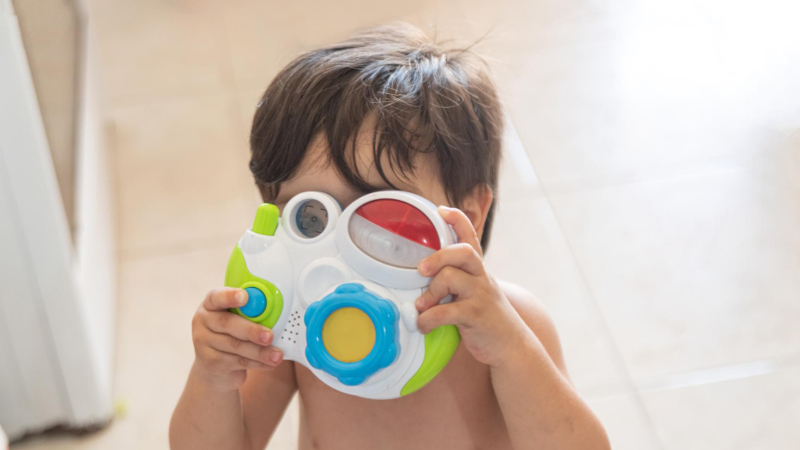

The study selected toys intended for children aged 0 to 12 from different socioeconomic groups. Purchases were made in popular stores and shopping centers in the city of Ribeirão Preto in the state of São Paulo (image: Mateus André/Freepik)
An analysis of 70 plastic children’s products sold in Brazil revealed chemical contamination in most samples, with levels up to 15 times higher than permitted. Barium, lead, chromium, and antimony were the most commonly found toxic elements.
An analysis of 70 plastic children’s products sold in Brazil revealed chemical contamination in most samples, with levels up to 15 times higher than permitted. Barium, lead, chromium, and antimony were the most commonly found toxic elements.

The study selected toys intended for children aged 0 to 12 from different socioeconomic groups. Purchases were made in popular stores and shopping centers in the city of Ribeirão Preto in the state of São Paulo (image: Mateus André/Freepik)
By Maria Fernanda Ziegler | Agência FAPESP – Researchers from the University of São Paulo (USP), in collaboration with the Federal University of Alfenas (UNIFAL), have identified high levels of toxic substances in plastic toys sold in Brazil. The study analyzed 70 domestically manufactured and imported products, making it the most comprehensive study ever conducted in Brazil on chemical contamination in children’s products. The results were published in the journal Exposure and Health.
Supported by FAPESP (21/03633-0 and 23/11634-2), the analysis revealed that most toys do not comply with safety standards set by Brazil’s National Institute of Metrology, Quality, and Technology (INMETRO) and the European Union. The most serious case involved barium: 44.3% of the samples exceeded the permitted limit, with concentrations up to 15 times higher than the regulatory value. Exposure to barium can cause cardiac and neurological problems, such as arrhythmias and paralysis.
High levels of lead, chromium, and antimony were also found. Lead, which can cause irreversible neurological damage, memory impairment, and a lower IQ in children, was found above the limit in 32.9% of the samples, with concentrations nearly four times higher than the allowable amount. Antimony, which can cause gastrointestinal damage, and chromium, which is carcinogenic, showed irregularities in 24.3% and 20% of the toys, respectively.
“These data reveal a worrying scenario of multiple contamination and lack of control. So much so that in the study we suggest stricter enforcement measures, such as regular laboratory analyses, product traceability, and more demanding certifications, especially for imported items,” says Bruno Alves Rocha. This work resulted from Rocha’s postdoctoral research, which was supported by FAPESP and was recently completed during his time as a visiting professor at UNIFAL.
For the study, toys were selected to represent different socioeconomic groups. Purchases were made at popular stores and shopping malls in Ribeirão Preto. “We chose toys intended for children aged 0 to 12, many of which were sized and shaped to facilitate oral exploration – that is, they could be put in the mouth – which increases the risk of exposure to toxic substances,” Rocha explained to Agência FAPESP.
The substances were identified and quantified using inductively coupled plasma mass spectrometry (ICP-MS), a technique that can detect trace amounts of metals and non-metals. The investigation also employed a process known as microwave-assisted acid digestion to simulate the release of chemicals through contact with children’s saliva.
This analysis revealed 21 elements with toxic potential: silver (Ag), aluminum (Al), arsenic (As), barium (Ba), beryllium (Be), cadmium (Cd), cerium (Ce), cobalt (Co), chromium (Cr), copper (Cu), mercury (Hg), lanthanum (La), manganese (Mn), nickel (Ni), lead (Pb), rubidium (Rb), antimony (Sb), selenium (Se), thallium (Tl), uranium (U), and zinc (Zn).
Using bioavailability (acid digestion) tests, the researchers set up two exposure scenarios for toxic substances: normal exposure based on median values and high exposure based on maximum values. “Exposure varies according to the concentrations of toxic elements, but it can also vary greatly from one child to another depending on how long they play with or keep the object in their mouth,” says the researcher.
Extraction rates, or the release of substances through contact with gastric juice, ranged from 0.11% to 7.33%. This indicates that only a small fraction of total contaminants are released under conditions that simulate oral exposure. “While this is positive, the finding doesn’t eliminate safety concerns, particularly given the high total concentrations detected in many samples,” says Rocha.
The study also helped map the toy production chain and identify possible sources of contamination. “We found correlations between nickel, cobalt, and manganese, suggesting a common manufacturing origin. Beige-colored toys had higher metal concentrations, possibly due to the paint supplier, which is a relevant clue for future enforcement actions,” he says.
In addition to toxic elements, the group of researchers has investigated the presence of substances capable of interfering with the hormonal system in previous studies. These substances include bisphenols, parabens, and phthalates, which are known as endocrine disruptors.
“This isn’t the first study with such alarming results, which only reinforces the need for urgent action to protect children’s health,” Rocha concludes.
The article “Potentially toxic elements in Brazilian toys: a bioaccessibility-based childhood health risk assessment” can be read at link.springer.com/article/10.1007/s12403-025-00731-2.
Republish
The Agency FAPESP licenses news via Creative Commons (CC-BY-NC-ND) so that they can be republished free of charge and in a simple way by other digital or printed vehicles. Agência FAPESP must be credited as the source of the content being republished and the name of the reporter (if any) must be attributed. Using the HMTL button below allows compliance with these rules, detailed in Digital Republishing Policy FAPESP.





